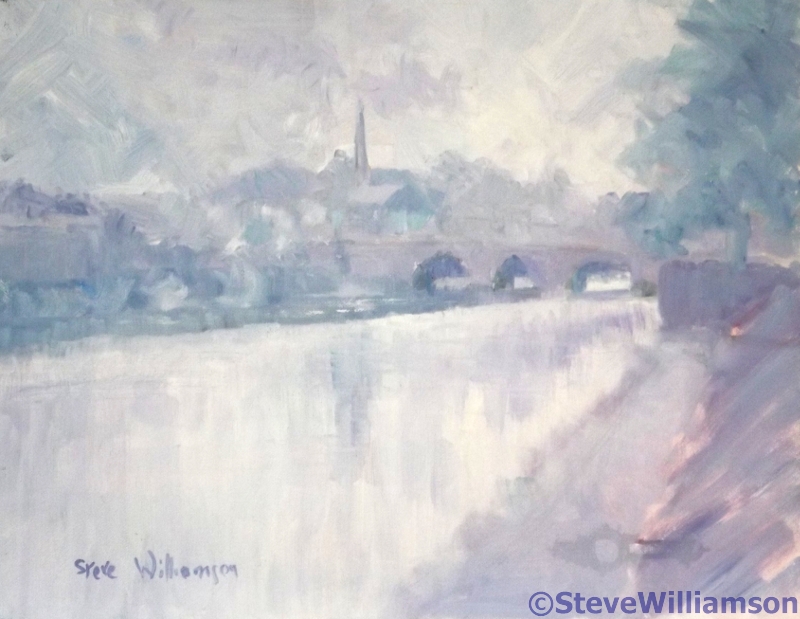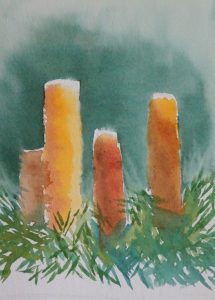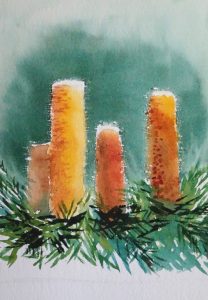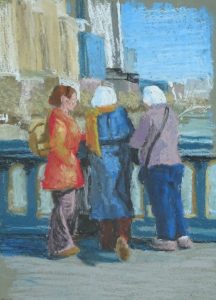The discontent is not the current Solitude. It concerns the rediscovery of a Layflat Sketch Pad I bought a month or two after the publication of my book “The Bridges of Dee”, when I was feeling artistically rudderless. I had been painting the bridges pictured therein for some years, a very strong focus, and now I had none. Being somewhat circumscribed by caring responsibilities, I couldn’t go as far as thought might take me (my other river, the Tyne? more bridges? Chester?).
Inspired by a article in either “The Artist” or “Leisure Painter”, I decided to make a painterly record of the garden. The advantage of the layflat layout is that you can paint/draw across the fold so a painting could grow sideways if necessary, and gardens do grow. Unfortunately I hit a “only painting rubbish” phase and was inhibited by the acres of white paper, and the idea of a rubbish painting trapped in a book! I’m no better off now either. As soon as I saw it, the old doubts reappeared, even though my paintings, currently, are not rubbish.
What to do? Displacement activity required. How about starting with the title page – it is a book, after all? What do I call it? The Garden, My Garden, Garden, Gardening Notes, Flowers in my Garden, Heaven on Earth? (eek! I say,steady on). And what font? and where to put the title? Up high on the page with wisteria drooping from it? In the middle surrounded by a wreath of summer flowers? Bottom right, alone?
Some decisions have been made, title – My Garden; font – my own handwriting, which isn’t neat but probably has a closer affinity to the garden than a more formal font. I’m not an accomplished flower painter, so although I’m attracted to the wisteria idea (the crossbar of the pergola would be a good place to sign) I’m a lot nervous about launching into flowers on page one. Come on, Steve! You’ve got to start somewhere!
Because I don’t like a post without a picture, I’ve included one from the book. It’s the Old Dee Bridge on a misty morning.





